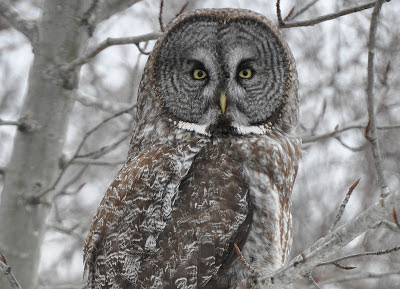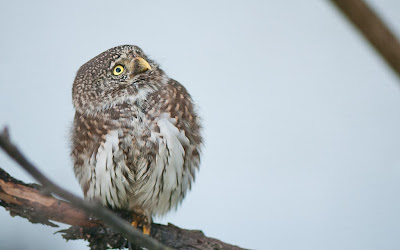 |
| Manx Shearwater, ©Cristián Pinto, via Flickr Creative Commons. |
 |
| Manx Shearwater sketch. |
 |
| Manx Shearwater, ©Cristián Pinto, via Flickr Creative Commons. |
 |
| Manx Shearwater sketch. |
 |
| Macaronesian Shearwater, ©Rafael Matias, used with permission. |
 |
| Macaronesian Shearwater sketch. |
 |
| Great Shearwater, ©JJ Harrison, via Wikimedia Commons. |
 |
| Great Shearwater sketch. |
 |
| This Bottlenose Dolphin was something of a local celebrity, hence the crowd of admirers. It had been hanging around near Watermouth for a while. |
 |
| The Bottlenose Dolphin in front of our boat. We also saw a few Harbour Porpoise on this trip. |
 |
| Lovely dark iris on this juvenile Herring Gull in Ilfracombe Harbour. |
 |
| Six-spot Burnet (Zygaena filipendulae) in Ilfracombe. |
 |
| Very pretty Sand Spurrey (Spergularia rubra) on the cliffs at Ilfracombe. |
 |
| Saunton Sands had been invaded by Moon Jellyfish (Aurelia aurita)! The highlight here though was a small flock of around 10 Dunlin which flew past, still in their breeding plumage :o) |
 |
| Sea Spurge (Euphorbia paralias) at Braunton Burrows. |
 |
| Lovely Hare's Foot Clover (Trifolium arvense) at Braunton Burrows. |
 |
| Cinnabar (Tyria jacobaeae) caterpillar on Common Ragwort (Senecio jacobaea) at Braunton Burrows. |
 |
| Rock Samphire (Crithmum maritimum) at Braunton Burrows. I did try a bit (once I had ascertained its identity), it was rather salty but not unpleasant. |
 |
| Barricane Beach - I love how rockpools are like little miniature self-contained worlds. |
 |
| Miniature rockpool landscape on Barricane Beach. |
 |
| Cory's Shearwater, ©ah_kopelman, via Flickr Creative Commons. |
 |
| Cory's Shearwater sketch. |
 |
| Fulmar, ©Ian A Kirk, via Flickr Creative Commons. |
 |
| Fulmar sketch. |
 |
| Red-necked Grebe, ©winnu, via Flickr Creative Commons. |
 |
| Red-necked Grebe sketch. |
 |
| The marsh. |
 |
| This one had me puzzled, I think it could be Ground-elder (Aegopodium podagraria). Possibly. |
 |
| Common Knapweed (Centaurea nigra) I reckon. |
 |
| I think this is White Bryony (Bryonia dioica). |
 |
| Hahahaha. |
 |
| Gatekeeper (Pyronia tithonus). |
 |
| Sketches of Lapwing, Starling, Coot and Little Ringed Plover. |
 |
| The Rowley Hills. |
 |
| The Rowley Hills, showing their very urban setting in the background. |
 |
| Marbled White (Melanargia galathea). |
 |
| Marbled White (Melanargia galathea). |
 |
| Meadow Brown (Maniola jurtina). |
 |
| Small Skipper (Thymelicus sylvestris). |
 |
| Narrow-bordered Five-spot Burnet (Zygaena lonicerae). Probably. |
 |
| Narrow-bordered Five-spot Burnet (Zygaena lonicerae) chrysalises. |
 |
| Peacock (Inachis io) caterpillar. |
 |
| Great Crested Grebe, ©Stefan Berndtsson, via Flickr Creative Commons. |
 |
| Great Crested Grebe sketch. |
 |
| Little Grebe, ©Derek Keats, via Flickr Creative Commons. |
 |
| Little Grebe sketch. |
 |
| Black-necked Grebe, ©Marek Szczepanek, via Wikimedia Commons. |
 |
| Black-necked Grebe sketch. |
 |
| Northern Hawk-Owl, Hökuggla, ©Dan Frendin, via WIkimedia Commons. |
 |
| Eurasian Eagle Owl, ©Sonja & Roland, via Flickr Creative Commons. |
 |
| Great Grey Owl, ©westfortwarbler, via Flickr Creative Commons. |
 |
| Ural Owl, ©Salmando, via Flickr Creative Commons. |
 |
| Eurasian Pygmy Owl, ©snowmanradio, via WIkimedia Commons. |
 |
| Tengmalm's Owl, ©Mdf, via WIkimedia Commons. |
 |
Cavalli Al Pascolo Ai Piedi Del Massiccio Del Fitz Roy, Patagonia, ©Annalisa Parisi, via Wikimedia Commons. |
 |
| Patagonia Alive, ©Stuck in Customs, via Flickr Creative Commons. |
 |
| Perito Moreno Glacier, Patagonia, Argentina, ©Luca Galuzzi, via Wikimedia Commons. |
 |
| Patagonia's Profile, ©Irargerich, via Flickr Creative Commons. |
 |
| 'Turquoise Mirrors', Argentina, Patagonia, Parque Nacional Los Glacieres, Lago de las Tres, Mt. Fitzroy, ©WanderingtheWorld (www.LostManProject.com), via Flickr Creative Commons. |